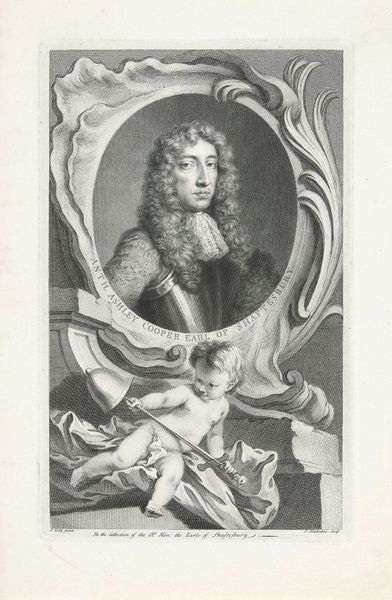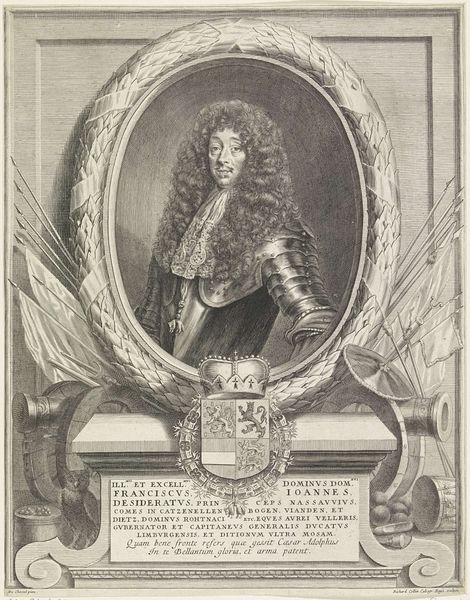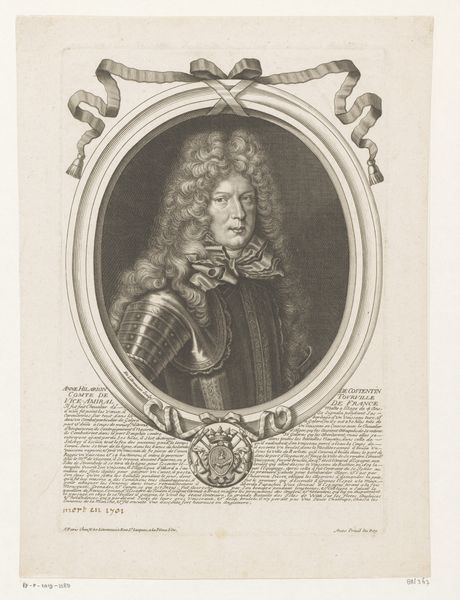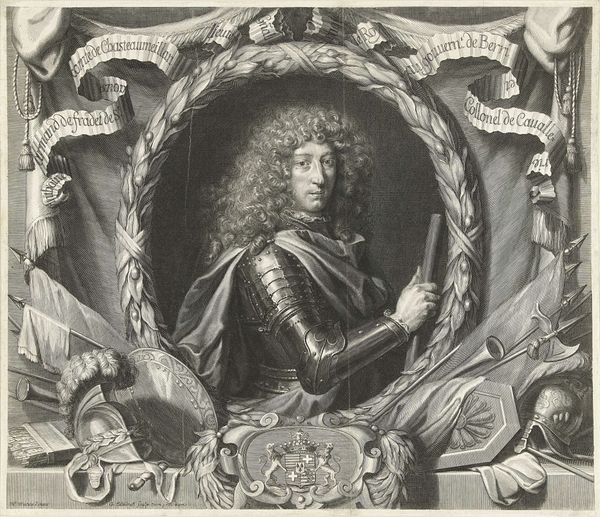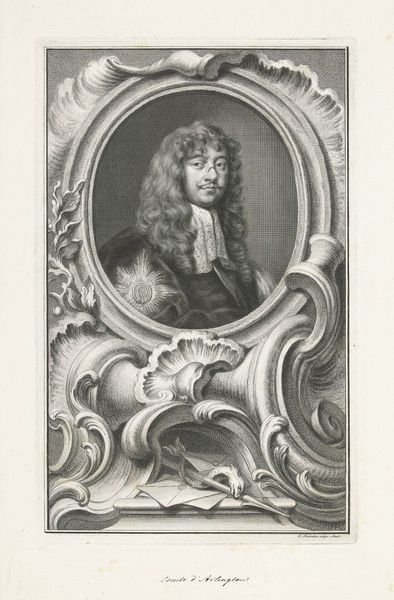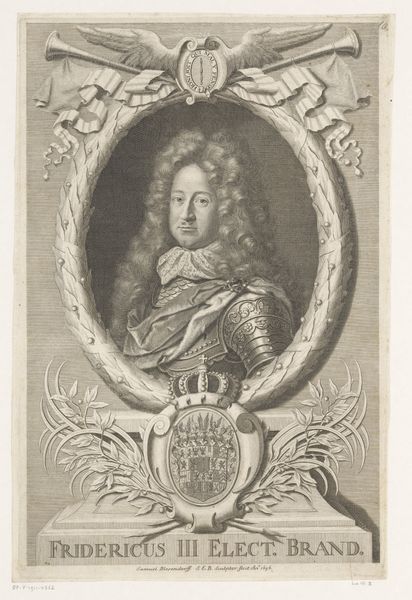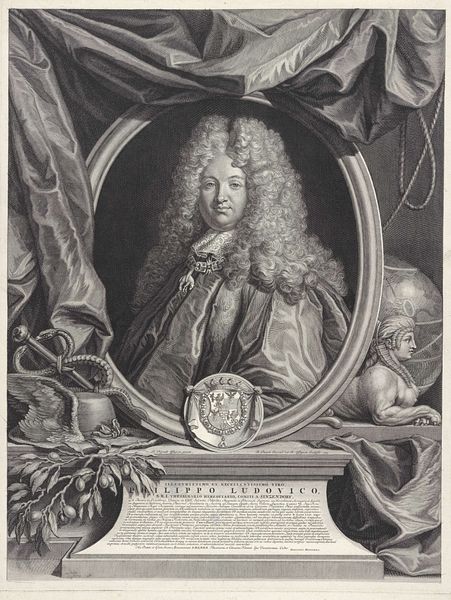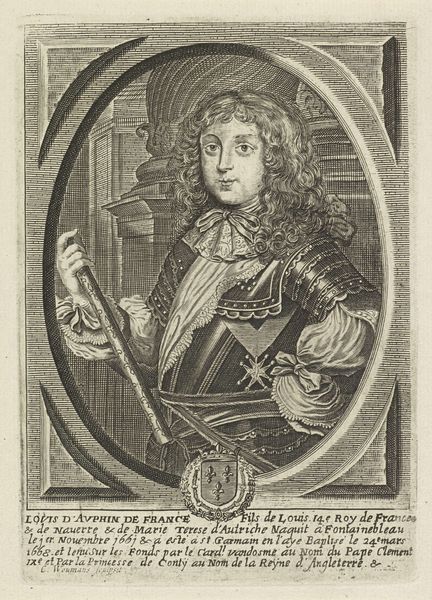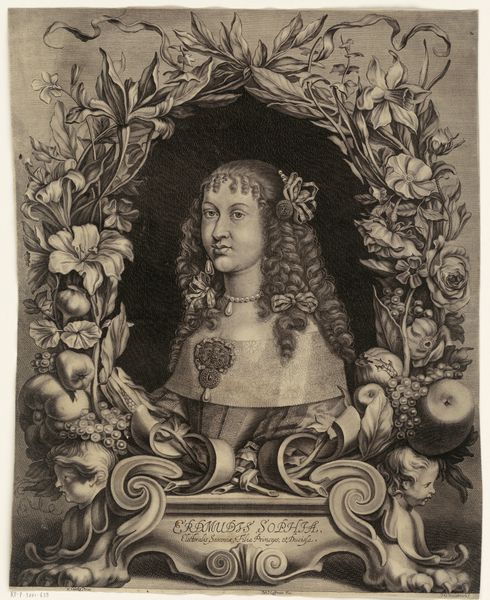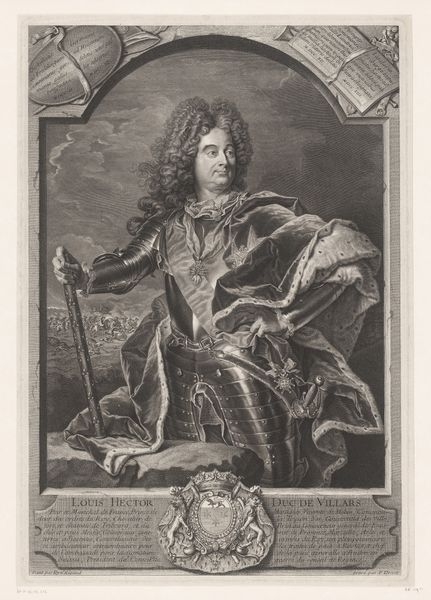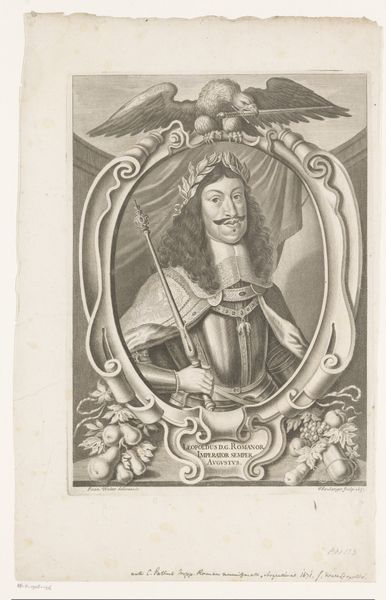
print, engraving
#
portrait
#
baroque
# print
#
old engraving style
#
caricature
#
portrait drawing
#
history-painting
#
engraving
Dimensions: height 401 mm, width 313 mm
Copyright: Rijks Museum: Open Domain
Curator: Here we see an engraving, dating back to 1675. It’s a portrait of Johannes Antonius Tucher, created by Alexander (II) Voet, now held in the Rijksmuseum collection. The Baroque print style, surrounded by heraldic emblems, really establishes the importance of family lineage. Editor: It strikes me as rather severe, almost mournful. Despite all the ornate details – the armour, the flowing hair – there’s a gravity in the subject's gaze, and the monochrome adds to this effect. Curator: Indeed. The print medium itself, engraving, lent itself particularly well to capturing detail and the precision so prized during the Baroque period. Look at how those symbols communicate prestige. Family crests acted like a personal brand of sorts. Editor: But also exclusivity and power. The Baroque wasn't just about fancy aesthetics; it was also about reinforcing hierarchical structures. We have to remember how social inequality was expressed visually through art, particularly in portraiture of elite members such as this man. Curator: Certainly. Consider how prints allowed wider circulation of these powerful images beyond painted portraits affordable only by a few, embedding his position through visual multiplication and distribution. Editor: But even within these supposedly objective portrayals, a construction is taking place. How Tucher wished to be remembered and understood—the armour projecting military authority, perhaps at odds with another, private, understanding. Curator: An intriguing tension to perceive, because there may be other stories to unlock in examining his relationship with those visual codes, by interpreting clues intentionally woven into this engraved tableau. The surrounding family emblems, each representing continuity, project something grand and seemingly timeless. Editor: This is what is appealing. This portrait invites us to consider it in dialogue between permanence and the transience of an individual. What did it cost him to maintain such social expectations and appearances? These historical artifacts offer an archive of social structures, but, most importantly, we can re-read them with sensitivity to historical inequalities and power. Curator: Precisely. And by analyzing the carefully chosen symbols, techniques and visual codes present here we gain insight into a bygone world, as well as that enduring aspect to images and icons that keeps this world close to us. Editor: An engagement which then enables a space to rethink this past while re-imagining better and perhaps fairer presents. Thank you.
Comments
No comments
Be the first to comment and join the conversation on the ultimate creative platform.
